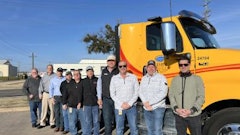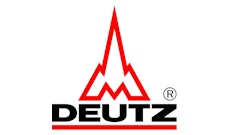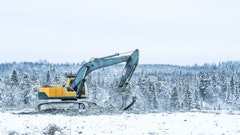NGVAmerica and its member companies commend the U.S. Environmental Protection Agency (EPA) and the National Highway Traffic Safety Administration (NHTSA) for their proposal to increase fuel efficiency and reduce greenhouse gas (GHG) emissions from the nation’s trucks. The proposal, Greenhouse Gas Emissions and Fuel Efficiency Standards for Medium- and Heavy-Duty Engines and Vehicles—Phase 2, is expected to greatly improve the fuel efficiency and emissions performance of new medium- and heavy-duty trucks, including those powered by natural gas.
“Today’s proposal has the potential to be a win-win-win that will lower greenhouse gas emissions, reduce fuel costs and reduce our nation’s dependence on foreign oil,” says Matthew Godlewski, President of NGVAmerica. “NGVAmerica and its members welcome today’s announcement, and we look forward to working with EPA, NHTSA and the administration to finalize a rule that will meet these important goals.”
Natural gas trucks are currently available from a wide variety of U.S.-based manufacturers who offer the largest selection of factory-produced natural gas-powered transit buses, refuse, and short- and long-haul vehicles available anywhere in the world. Truck and bus fleets that use natural gas get the benefit of using a fuel that is clean, abundant and domestic.
The proposal (released on June 19) builds on the first EPA/NHTSA rule for medium- and heavy-duty trucks, which was finalized in 2011. The Phase 1 rule covered trucks, buses and other commercial vehicles manufactured in model years 2014 to 2018, and created the foundation for the new proposal. The Phase 2 proposal is expected to be finalized in 2016, and will cover vehicles built after 2018.
“Under the Phase 1 rule, natural gas trucks and buses are already delivering lower fuel costs and reduced emissions to fleet operators and consumers nationwide,” says Godlewski. “We have appreciated the administration’s collaborative effort in developing this proposal. We look forward to working with EPA, NHTSA and the administration to finalize a Phase 2 rule that will create new opportunities for fleets to use natural gas to further reduce fuel costs and emissions, while increasing energy security.”
Medium- and heavy-duty trucks powered by natural gas continue to show strong growth across a variety of applications. To highlight this growth in just one state, a recent report from the Railroad Commission of Texas shows sales for natural gas as a transportation fuel have increased 78% in Texas over last year, and IHS recently released a study, LNG in Transportation: Challenging Oil’s Grip, that projects significant growth in the heavy-duty and high-horsepower markets in the years ahead.



























